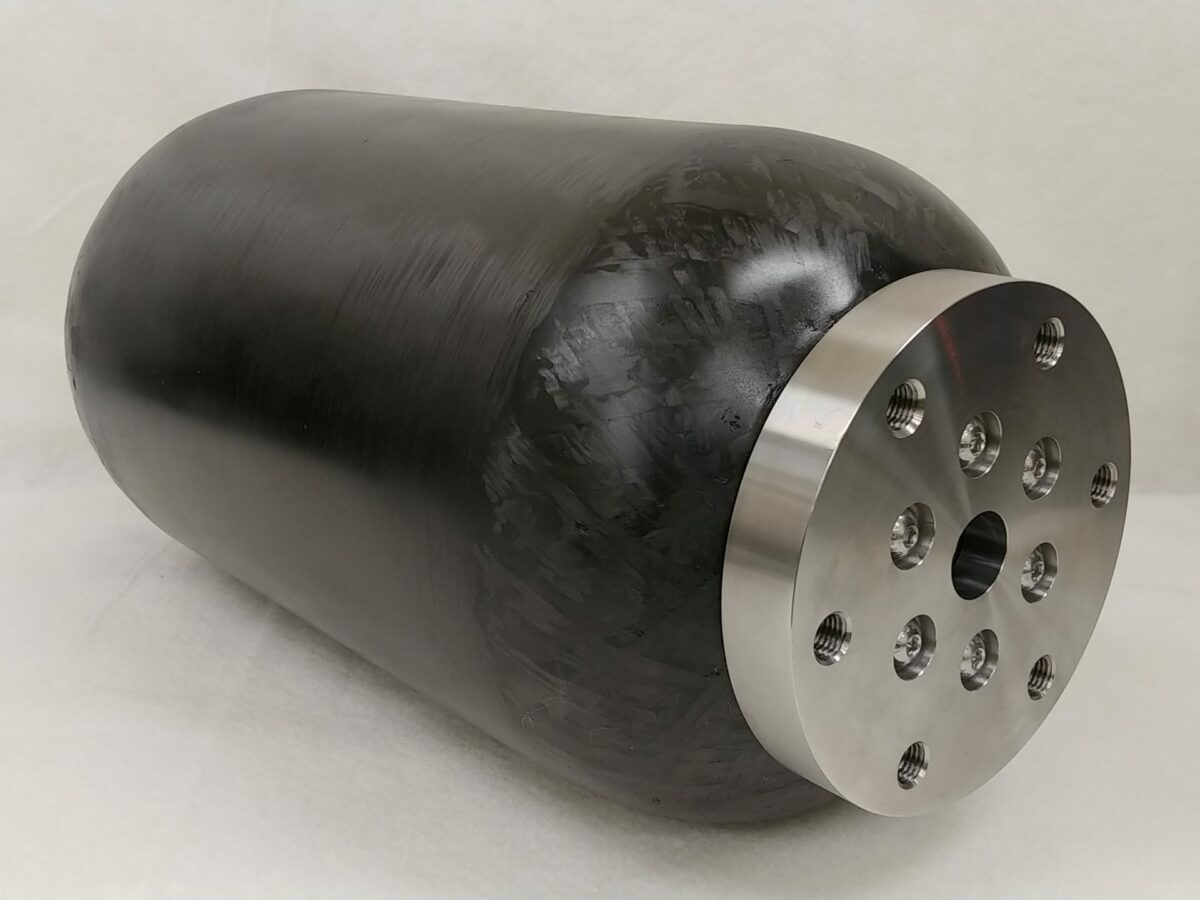Collaboration to develop liquid hydrogen tanks

A collaborative partnership has received Advanced Manufacturing Growth Centre (AMGC) funding to develop two new types of propellant tanks for storing cryogenic liquid fuels for commercial and civil satellite programs.
Aerospace giant Lockheed Martin, Australian composites manufacturer Omni Tanker and UNSW Sydney plan a “Type IV” fluoropolymer-lined carbon fibre composite tank and a “Type V” linerless carbon fibre composite tank (pictured).
Both tanks are suitable for high pressures, and the extreme cryogenic temperatures required for liquid hydrogen as well as oxygen, hydrogen peroxide and hydrazine.
AMGC’s Commercialisation Fund will provide $1.4 million, with the project combining nano-engineering technology developed by UNSW in partnership with Lockheed Martin and Omni Tanker.
Omni Tanker CEO, Daniel Rodgers said: “This next phase in our collaboration with Lockheed Martin and UNSW is a landmark development that sees Omni Tanker’s seamless thermoplastic lining technology enter the aerospace sector.
“The OmniBIND technology has made inroads to revolutionising the safe and efficient movement of challenging liquids within the chemical transport sector.”
With the final market re-usable low-earth-orbit satellites, the Australian technologies are destined for a number of Lockheed Martin and NASA applications, according to Christopher Hess, Head of Industrial Development, Lockheed Martin Australia.
David Ball, Regional Director Australia and New Zealand, Lockheed Martin Space, said the development of composite tanks that are lightweight, cost-effective, and resistant to microcracking and permeation represents a unique and innovative technological solution with significant space applications.
Ball said: “As the world increasingly looks to hydrogen for emission-free energy, containing and transporting it in a safe, cost-effective and economic manner remains extremely challenging.
“The space industry is particularly interested in the development of linerless composite tanks for their weight efficiency and durability, which represent the cutting edge of composite pressure vessel manufacturing.”
The project builds on a recent invention by the research team at UNSW led by Professor Chun Wang, which enables carbon fibre composites to withstand liquid hydrogen temperatures without matrix cracks have have prevented mass-market adoption of these materials.
Picture: Lockheed Martin/linerless liquid hydrogen tank
Subscribe to our free @AuManufacturing newsletter here.
Topics Manufacturing News Technology
@aumanufacturing Sections
Analysis and Commentary Awards Defence Manufacturing News Podcast Technology Videos










